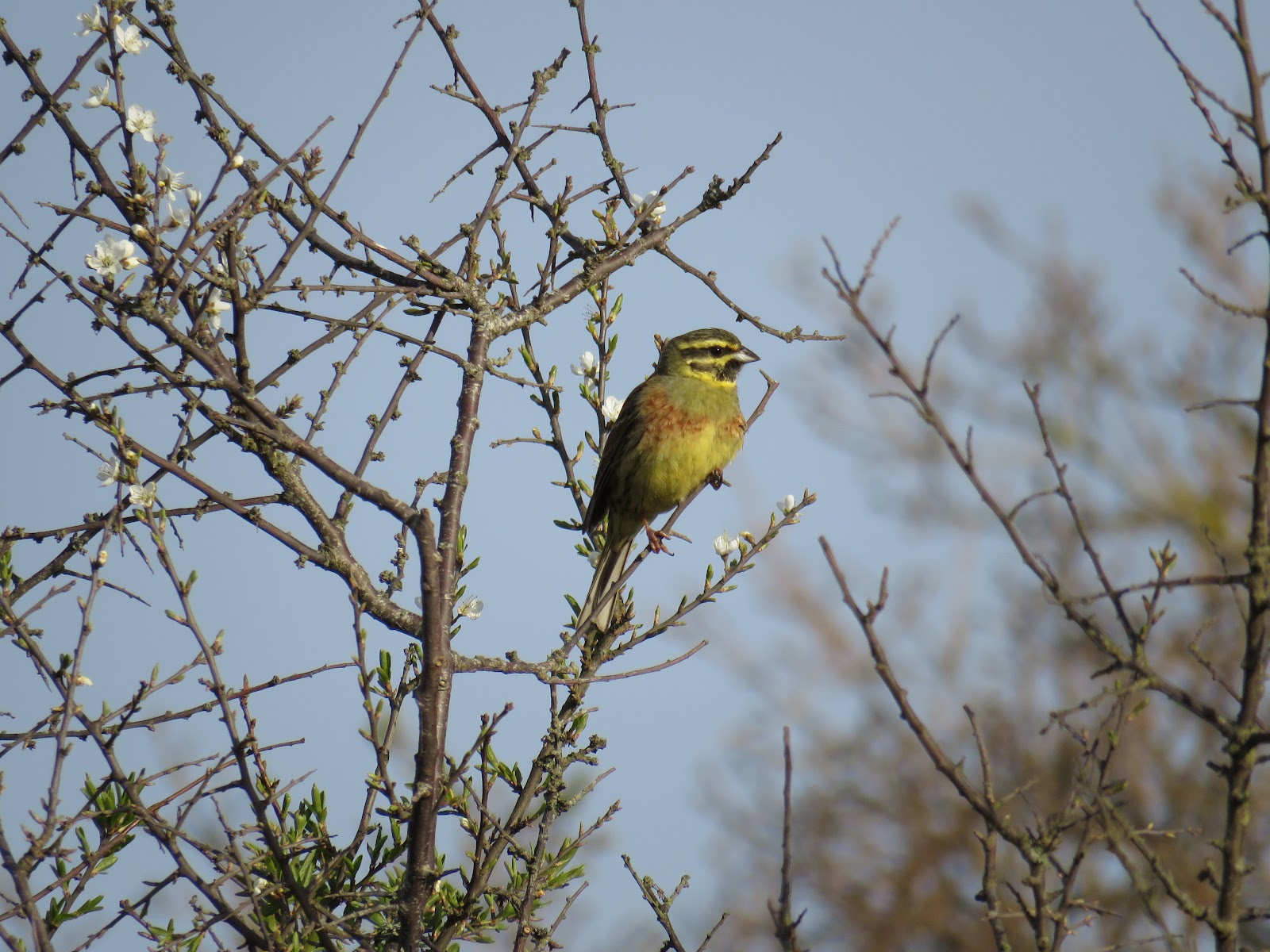Cirl Buntings
I recently spent a few days in the small but perfectly formed town of Shaldon, in south Devon, nestled on the southern flank of the mouth of the Teign estuary, where the river discharges into the Atlantic Ocean. Although not a birding trip, the optics, of course, came along too. Two dawn starts were made (31st March and 2nd April) where I walked southwards along the South-West Coast path, leaving Shaldon via a number of steep slopes before arriving at Labrador Bay, an area of farmland, copse, gorse scrub and hedgerow, managed in part by the RSPB - whose presence is explained by residency of a very special bird indeed - the Cirl Bunting.
Coming from Surrey, I have few opportunities to watch this species, although I am old enough to have seen this bunting in my home county (way back in the 1970s and early 80s, although even then the population was down to a single pair). My two visits to Labrador Bay were blessed with clear skies, sunshine and shelter from a nagging and cold northerly wind. Cirl Buntings were not hard to find, with visit one yielding a minimum of 16 birds, and visit two a healthy 27. They comprised mostly males, with frequent singing, although such song was brief and seemed to be not that of the establishment of territory, more due to the bird's sheer joy of the sunny and warm micro-climate - but, being neither a Cirl Bunting nor an ornithological psychologist, it is just a hunch...
There is a small amount of supplementary feeding on site, with a few food bins hidden in the hedgerows and some tell-tale carpets of seed in set-aside brassica fields. I doubt that I visited anything other than the northern part of the reserve. The view southwards, towards Torquay, and inland revealed plenty of suitable Cirl Bunting habitat. I wandered the beautiful, red-earthed scenery in a soporific state, bathing in the heady mix of sea, sky, bunting rattle and the gorse-perfumed air.
This female caused me a little bit of concern. I nonchalantly accepted it as being a Cirl Bunting, but over a period of observation became concerned that it looked too yellow, plus the head markings did not seem bold enough for that species - and wasn't that white spot at the rear of the ear-coverts not as striking as it should be? There was no getting away from the fact that this bird did not exhibit the warm rufous rump of a Yellowhammer, but could a Cirl be as 'plain' as this? Seeing as my Cirl Bunting CV is not one of recent multiple observations, I posted the image on Twitter and received replies from, amongst others, Gavin Haig, Mike Langman, Paul Tout and John Cantello, all regularly exposed to Cirl and happy to confirm it as such. A different female image can be found below.
If you are ever passing Labrador Bay, do stop. There is a car park at the top of the reserve, where you will not even have to get out of the car to see and hear this wonderful bunting. But why would you not want to walk down the slope towards the cliff tops, to tread on that red earth and get close and personal with Emberiza cirlus?







Comments